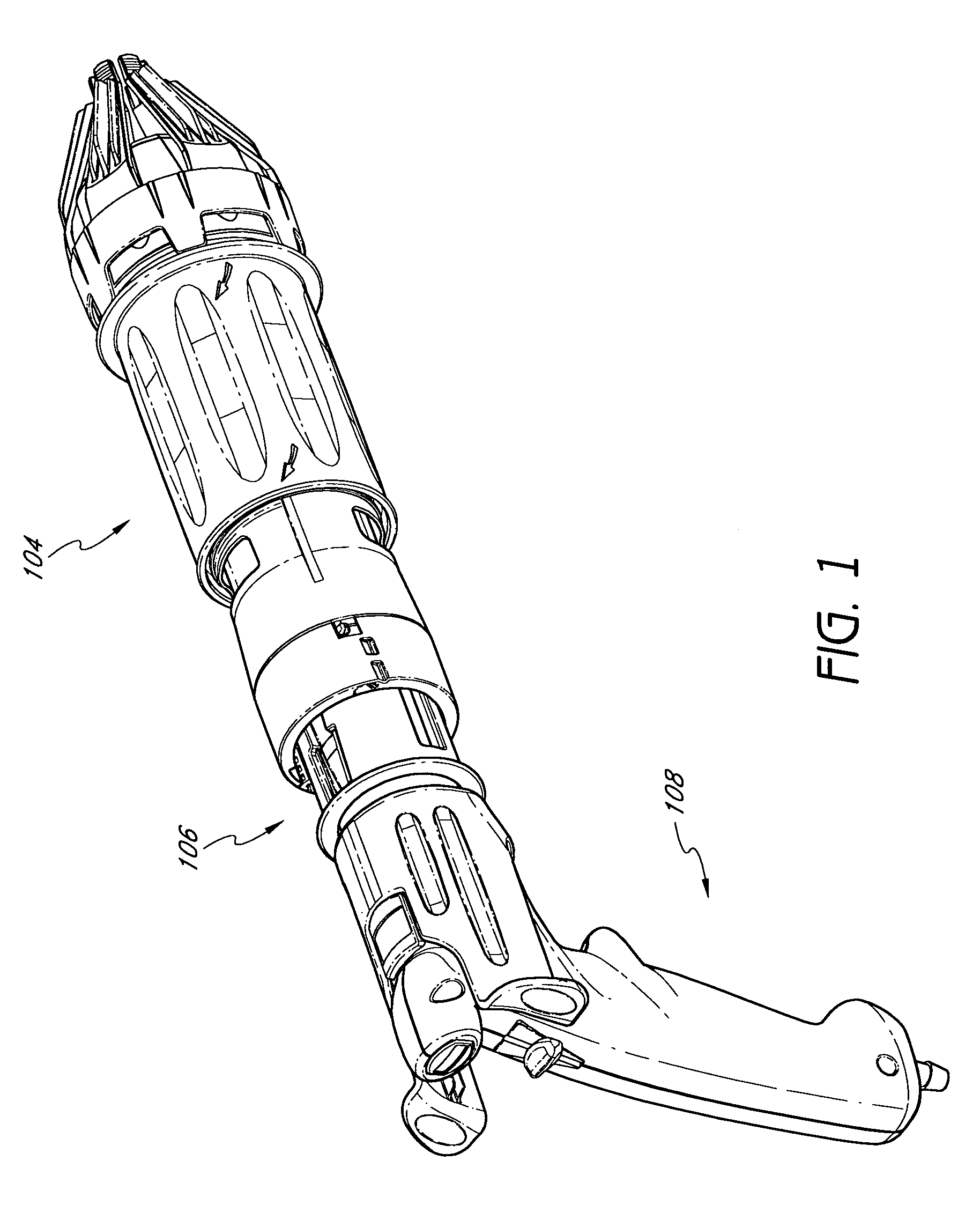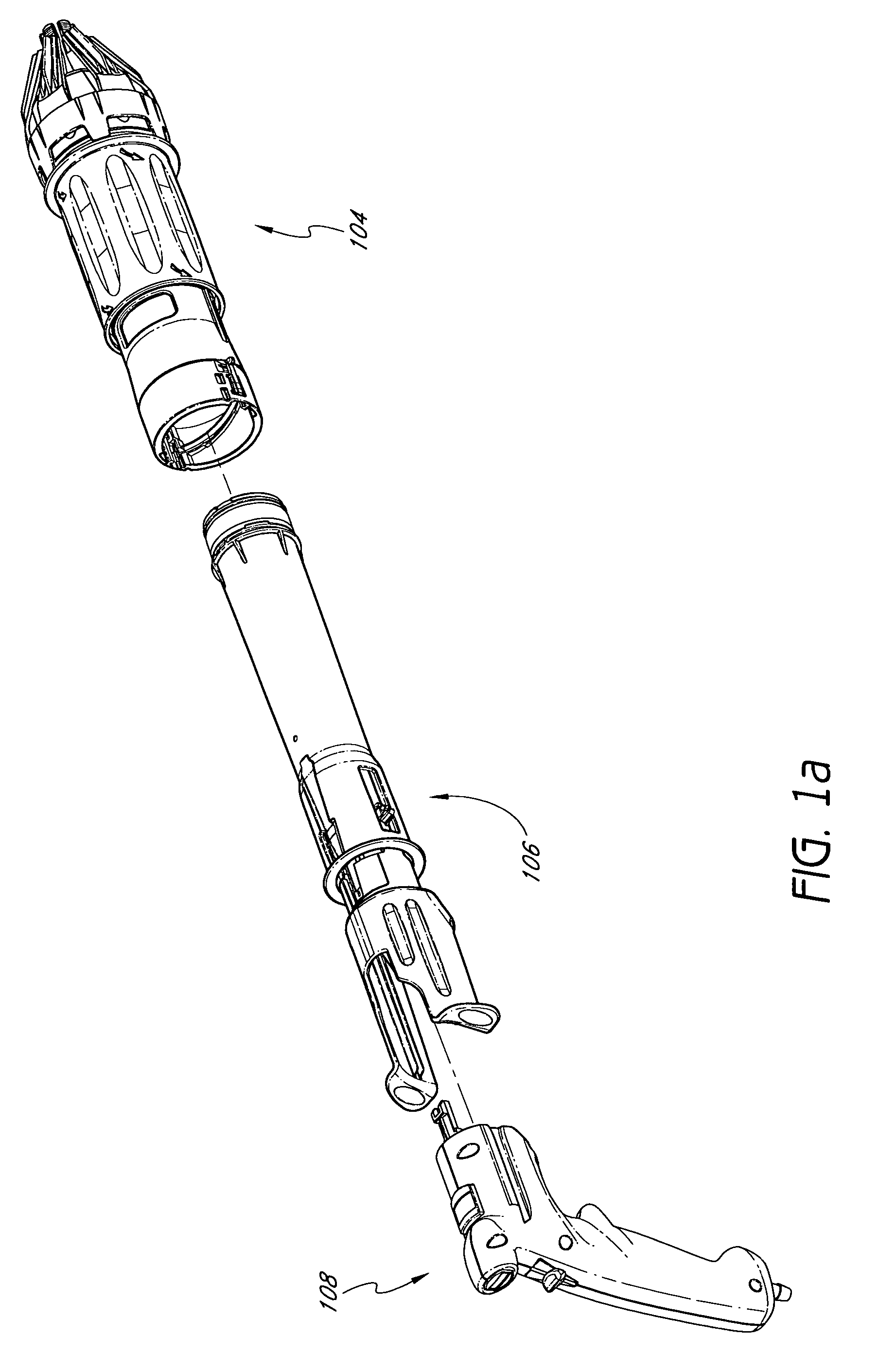Device to deploy a resilient sleeve to constrict on body tissue
a resilient sleeve and body technology, applied in the field of devices to deploy resilient sleeves to constrict on body tissue, can solve the problems of copd becoming a major cause of morbidity and mortality, no cure, airflow obstruction in copd, etc., and achieve the effect of suppressing leakage in organs and tissues and improving copd treatmen
- Summary
- Abstract
- Description
- Claims
- Application Information
AI Technical Summary
Benefits of technology
Problems solved by technology
Method used
Image
Examples
Embodiment Construction
[0060]The preferred embodiment contemplates a device configured to prepare and deploy a resilient sleeve 100 on to a portion of body tissue. This device expands the resilient sleeve 100, uses a vacuum system to draw the body tissue into resilient sleeve 100, and releases resilient sleeve 100 from the expanded state so that it captures and constricts the body tissue.
[0061]A preferred embodiment of resilient sleeve 100 is depicted in FIGS. 1b and 1c. In alternative embodiments, the device may prepare and deploy a resilient part of different shape, such as a cylindrical ring similar to a ligation band. For example, some embodiments of resilient sleeves that may be used are described in the patents and applications described above.
[0062]The preferred embodiment of the invention employs a loading component 104 to expand and load resilient sleeve 100 on to an introducing component 106. Preferably, introducing component 106 then cooperates with the loading component 106 to position resilie...
PUM
 Login to View More
Login to View More Abstract
Description
Claims
Application Information
 Login to View More
Login to View More - R&D
- Intellectual Property
- Life Sciences
- Materials
- Tech Scout
- Unparalleled Data Quality
- Higher Quality Content
- 60% Fewer Hallucinations
Browse by: Latest US Patents, China's latest patents, Technical Efficacy Thesaurus, Application Domain, Technology Topic, Popular Technical Reports.
© 2025 PatSnap. All rights reserved.Legal|Privacy policy|Modern Slavery Act Transparency Statement|Sitemap|About US| Contact US: help@patsnap.com



